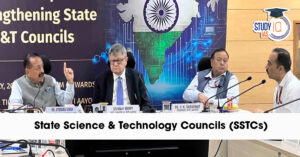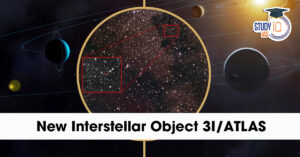Table of Contents
Blockchain Technology has emerged as a revolutionary force in the world of finance, business, and beyond. Originally developed as the underlying technology for cryptocurrencies like Bitcoin, blockchain has since found its way into numerous industries, offering a secure, transparent, and efficient means of recording and verifying transactions. In this article, we will delve into the basics of Blockchain Technology, its advantages, applications, its relationship with cryptocurrencies, and various types of Blockchain Technology.
Blockchain Technology Definition
At its core, a blockchain is a distributed ledger technology that enables the secure and transparent recording of transactions across a network of computers. Unlike traditional centralized systems, where a single entity (like a bank or a government) controls the ledger, a blockchain is decentralized. This means that multiple participants (nodes) on the network maintain identical copies of the ledger, ensuring transparency and preventing a single point of failure.
Who Invented Blockchain Technology?
Blockchain technology was invented by an individual or group operating under the pseudonym Satoshi Nakamoto in 2008. Originally created as the underlying technology for the cryptocurrency Bitcoin, Nakamoto’s invention aimed to establish a decentralized public transaction ledger, the blockchain. This innovation allowed users to have autonomous control over their funds, eliminating the need for third-party intermediaries and government oversight.
Notably, Satoshi Nakamoto mysteriously vanished from public view in 2011, leaving behind open-source Bitcoin software that the user community could enhance and maintain. This groundbreaking invention addressed the double-spending problem, setting the precedent for numerous applications beyond digital currencies.
How Blockchain Technology Works?
Blockchain technology is founded on three fundamental concepts: blocks, nodes, and miners, which together create a secure and transparent system for recording transactions and data.
Blocks
Each blockchain is composed of multiple blocks, with each block containing three essential components:
- Data: The data stored in a block, which can vary depending on the blockchain’s purpose, such as financial transactions or smart contracts.
- Nonce: A 32-bit random number known as a nonce. This nonce is generated during the creation of a block and plays a crucial role in forming the block’s header hash.
- Hash: A 256-bit number resulting from combining the nonce with the block’s data. This hash must meet specific criteria, typically beginning with a significant number of leading zeroes, to be considered valid. This hash is essential for securing the block’s contents and linking it to the previous block in the chain.
When the first block in a blockchain is created, a nonce is randomly generated, and its combination with the block’s data produces a cryptographic hash. This data is considered immutable and is forever tied to the nonce and hash unless the block is mined.
Miners
Miners are key participants in the blockchain network responsible for creating new blocks through a process known as mining. Mining is a highly competitive and resource-intensive task, particularly on larger blockchain networks. Here’s how it works:
- Every block in a blockchain has its unique nonce and hash.
- Additionally, each block references the hash of the previous block in the chain, creating a chronological and interconnected structure.
- Miners employ specialized software to solve complex mathematical puzzles, aiming to find a nonce that, when combined with the block’s data, generates an accepted hash.
- Given that nonces are only 32 bits and hashes are 256 bits, there are approximately four billion possible nonce-hash combinations to explore before finding the elusive “golden nonce.”
- Once a miner discovers the golden nonce, their block is added to the blockchain. Importantly, modifying any block earlier in the chain necessitates re-mining not just the altered block but all subsequent blocks. This computational difficulty makes it extremely challenging to manipulate blockchain technology, providing inherent security.
Successful mining results in the acceptance of the block’s change by all nodes on the network, and miners are rewarded financially for their efforts.
Nodes
Decentralization is a core principle of blockchain technology, meaning no single entity or organization can control the entire chain. Instead, blockchain operates as a distributed ledger through interconnected nodes. Nodes can be various electronic devices that maintain copies of the blockchain, ensuring the network’s integrity and functionality.
Each node possesses its copy of the blockchain and participates in the network’s consensus mechanism. This consensus algorithm systematically evaluates newly mined blocks for acceptance, ensuring trust and verification across the network. The transparency of blockchains enables easy monitoring and validation of all ledger activities. Every participant is assigned a unique alphanumeric identification number to track their transactions, enhancing transparency and security.
Types of Blockchain Technology
Blockchain technology comes in various types, each with distinct characteristics and use cases. The primary types of blockchain technology are:
- Public Blockchain: Open and permissionless, anyone can participate, view, and validate transactions. Examples include Bitcoin and Ethereum. Public blockchains are ideal for cryptocurrencies and open applications.
- Private Blockchain: Restricted access and permissions are controlled by a single entity or a consortium of organizations. They are often used for internal purposes, such as supply chain management within a company.
- Consortium Blockchain: Similar to private blockchains, multiple organizations or entities share control over the network. Consortium blockchains are useful for industries that require cooperation among competitors, like banking consortia.
- Permissioned Blockchain: Participants must be granted permission to join or access the blockchain network. Permissioned blockchains are favoured by enterprises for their control and privacy features.
- Hybrid Blockchain: Combines elements of both public and private blockchains, allowing data to be private when necessary and public when it’s beneficial. Hybrid blockchains offer flexibility for various use cases.
- Federated Blockchain: A group of organizations or entities collaborate to operate a blockchain network. It provides more control than public blockchains and can be permissioned or permissionless.
- Sidechains: Separate blockchains connected to a main blockchain, allowing for scalability and experimentation without affecting the main chain. They enable custom features and functions while maintaining interoperability.
- Blockchain-as-a-Service (BaaS): Cloud-based blockchain platforms provided by third-party service providers. BaaS simplifies blockchain development and deployment for businesses.
- Multi-Chain: A network of interconnected blockchains that communicate and share data. Multi-chains offer flexibility in managing various assets and use cases within a single ecosystem.
- Cross-Chain: Technology that allows different blockchains to communicate and share data and assets seamlessly. Cross-chain solutions aim to enhance interoperability between disparate blockchain networks.
Blockchain Technology Applications
Blockchain technology has found applications in numerous industries:
- Cryptocurrencies: The most well-known application of blockchain is in cryptocurrencies like Bitcoin, Ethereum, and many others. Blockchain ensures secure and transparent transactions, enabling digital currencies to function without the need for banks or intermediaries.
- Supply Chain Management: Blockchain is being used to track the production, shipment, and delivery of products in supply chains. It provides real-time visibility, reduces fraud, and enhances trust among participants.
- Smart Contracts: Smart contracts are self-executing contracts with the terms of the agreement directly written into code. They automatically execute when predefined conditions are met, eliminating the need for intermediaries in various industries, such as legal, real estate, and insurance.
- Healthcare: Blockchain is used to secure and manage electronic health records. Patients can have more control over their data, and healthcare providers can access accurate patient histories, improving care and reducing errors.
- Voting Systems: Some countries are exploring blockchain-based voting systems to enhance the security and transparency of elections, reduce fraud, and increase voter participation.
- Identity Verification: Blockchain can provide secure and tamper-proof identity verification, reducing identity theft and streamlining processes like KYC (Know Your Customer) and AML (Anti-Money Laundering) checks.
- Cross-Border Payments: Traditional international payment systems can be slow and costly. Blockchain enables faster, more cost-effective cross-border transactions by eliminating intermediaries.
- Real Estate: Blockchain is used to record property ownership, streamline the buying and selling process, and reduce fraud in real estate transactions.
- Intellectual Property and Royalties: Artists, writers, and creators can use blockchain to protect their intellectual property rights and ensure fair compensation through transparent royalty distribution.
- Energy Trading: In the energy sector, blockchain facilitates peer-to-peer energy trading, allowing individuals and businesses to buy and sell excess energy directly to one another.
- Food Safety: The food industry uses blockchain to trace the origin of products, helping to quickly identify and recall contaminated or unsafe items.
- Education: Academic credentials and certifications can be securely stored on a blockchain, allowing employers and institutions to verify qualifications efficiently.
- Notary Services: Blockchain can serve as a digital notary, providing proof of existence and timestamping for documents and digital assets.
- Digital Voting: Some blockchain projects are exploring the use of blockchain for digital voting systems, potentially increasing accessibility and transparency in elections.
- Gaming: Blockchain technology is used in gaming to create rare, tradable in-game assets and ensure fairness in online gaming environments.
Advantages of Blockchain Technology
Blockchain technology offers a range of advantages that have made it increasingly popular across various industries. Here are some of the key advantages of blockchain technology:
- High Availability: Blockchain’s peer-to-peer network design ensures high availability. Even if one node fails, others continue to operate, maintaining system uptime.
- Immutability: In blockchain, data is permanent and cannot be altered or deleted, ensuring the integrity of recorded information.
- Transparency: Blockchain’s decentralized nature eliminates the need for centralized authorities, enhancing system transparency and trust.
- High Security: Blockchain offers robust security through cryptographic techniques, ensuring the integrity and confidentiality of transactions, reducing reliance on third-party trust.
Blockchain vs Cryptocurrency
| Aspect | Blockchain Technology | Cryptocurrency |
| Definition | A distributed ledger technology that records transactions across a network of computers. | A digital or virtual currency that uses cryptography for security and operates on a blockchain or similar technology. |
| Core Functionality | Facilitates secure and transparent recording of transactions and data. | Serves as a digital medium of exchange for goods and services. |
| Key Components | Blocks, nodes, miners, smart contracts, immutability. | Digital wallets, private keys, consensus algorithms (e.g., PoW, PoS). |
| Use Cases | Beyond cryptocurrencies: supply chain management, smart contracts, healthcare, voting systems, and more. | As a medium of exchange, store of value, and speculative investment. |
| Decentralization | Can be both centralized (private) and decentralized (public or consortium). | Typically decentralized; operates independently of central authorities. |
| Data Transparency | Offers transparency through distributed ledger records. | Transparent regarding transactions, but user identities remain pseudonymous. |
| Security | High security through cryptography, consensus mechanisms, and immutability. | Secure, but can be vulnerable to hacks and fraud if not managed properly. |
| Privacy | Depends on the blockchain type; some offer privacy features. | Offers pseudonymity, but not complete anonymity; transactions can be traced. |
| Regulation | Subject to regulatory oversight in various jurisdictions. | Faces varying degrees of regulation; some governments embrace, while others restrict. |
| Volatility | Not directly linked to price volatility; stability depends on blockchain use case. | Known for price volatility; values can fluctuate dramatically. |
| Examples | Ethereum, Hyperledger Fabric, Corda. | Bitcoin, Ethereum (as a cryptocurrency), Litecoin. |
Blockchain Technology in India Status
In India, the financial sector has taken the lead in adopting blockchain technology, leveraging its potential benefits. The technology is gaining significant traction across various sectors, with a particular focus on banking and insurance.
In many of these industries, collaborative efforts are underway as companies join forces to create consortia aimed at harnessing the advantages of blockchain technology on an industry-wide scale.
One noteworthy initiative is being undertaken by the Institute for Development and Research in Banking Technology (IDRBT), which operates under the auspices of the Reserve Bank of India (RBI). IDRBT is actively developing a model platform to facilitate the adoption and utilization of blockchain technology in the country.
Blockchain Technology Criticism
Blockchain technology faces significant criticisms and challenges. High energy consumption, notably in large blockchain networks like Bitcoin, raises environmental concerns amid global climate change issues. Safeguarding private keys is essential as their compromise means losing control over associated assets. Transaction speed is often slower compared to traditional systems due to the time-consuming verification process across the distributed network.
These challenges necessitate solutions addressing energy efficiency, enhanced security practices, and improved scalability to ensure blockchain’s viability and sustainability in various applications while mitigating its environmental and operational drawbacks.
Blockchain Technology Concept for UPSC
Blockchain technology is a decentralized digital ledger system that records transactions across a network of computers. Unlike traditional centralized systems, it lacks a single controlling entity, enhancing transparency and security. It operates through a chain of blocks, each containing data, a nonce, and a cryptographic hash. Miners solve complex puzzles to validate transactions and add new blocks to the chain. An advantage of blockchain is its immutability; once data is recorded, it cannot be altered.
This technology finds applications in finance, supply chain management, healthcare, and more. Notably, it underpins cryptocurrencies like Bitcoin. Various types of blockchains exist, including public, private, and consortium chains, each serving distinct purposes.
To enhance blockchain’s sustainability, energy-efficient consensus mechanisms like Proof of Stake (PoS) should be adopted, reducing environmental impact. User-friendly interfaces and enhanced education are crucial to improving private key security, making it more accessible and understandable for all users. For faster transaction speeds, scalable solutions and layer 2 technologies should be developed to alleviate congestion.
Clear and adaptable regulations are needed to provide legal certainty and foster blockchain innovation while addressing privacy concerns. Collaboration between stakeholders, continuous research, and responsible development will ensure blockchain’s evolution into a robust and inclusive technology, benefiting diverse industries and global sustainability goals.


 State Science and Technology Councils (S...
State Science and Technology Councils (S...
 Astronomers Discover Third Interstellar ...
Astronomers Discover Third Interstellar ...
 DRDO and Air Force Successfully Test Ind...
DRDO and Air Force Successfully Test Ind...





















